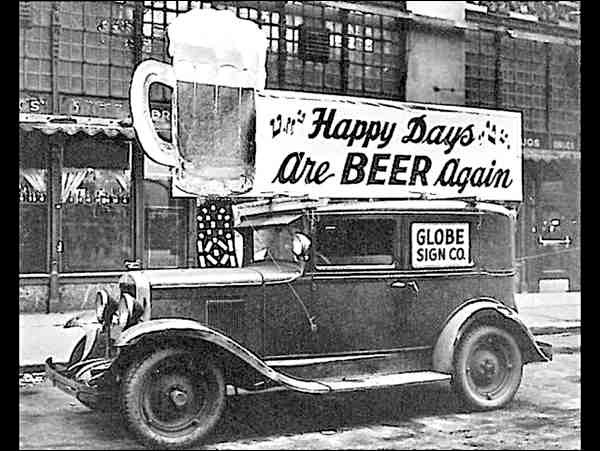The soldiers, like the rest of the people of the prairies, voted for prohibition in 1915 and '16 in simple revulsion against the evil social consequence of boozing in hotel bars. The vote in Manitoba was two to one for prohibition, in Saskatchewan it was four to one in favour, and Alberta went dry by a 60-40 majority.
In April 1915 all bars had to close by 7 p.m., and the following July all bar and club licenses were to be abolished; a public prosecutor was appointed to follow up and charge individuals and businesses for non-compliance. At the same time, the Saskatchewan government took over the wholesale aspects of the liquor industry. Saskatchewan thus became the first province to ban private sector sale of alcohol. By 1917 all other provinces except for Quebec joined the prohibition movement. In February 1918, an order-in-council was passed establishing nationwide prohibition for the duration of the war and one year thereafter.
Under the prohibition law it became illegal to sell alcohol within the province. The exception was wholesale drug companies, which could sell medicinal alcohol to drugstores for resale under doctors' prescriptions
In the beginning no restrictions were imposed on the number of prescriptions a doctor could issue or a druggist could fill. Nor was either profession required to keep records of business done. As a result, in all cities across the west the doctors did a roaring trade, but only those who could afford to pay $2 for the prescription and $3 to $5 to the druggist for the whiskey had access to alcohol. In Winnipeg one druggist and staff filled 180 prescriptions in an hour.
The enforcement of prohibition presented a continuing problem. On June 28, 1920, W.F.A. Turgeon, attorney general, introduced in the Saskatchewan Legislature a bill to curtail further the sale and consumption of liquor. Turgeon's bill, which came into force in December, 1921, was in the main, aimed to forestall possible breaches of the Prohibition Act by druggists and the medical profession
The image of Prohibition was being tarnished by an outbreak of bank robberies in 1921 and 1922 , which were blamed on the rum runners and bootleggers. Substantial leakage developed from the export stores, both before and after they were moved out of the small towns into major cities. A great deal of export booze consigned to the United States disappeared into the domestic markets before it reached the international boundary.
By 1923 it was estimated, in an RCMP report, that there were "more illicit stills" in Saskatchewan, with a population of 760,000, than there were in all the rest of Canada with a population of over 8,000,000."
During the first six months of 1923 a verbal battle continued between the prohibitionists and the supporters of the Moderation League. Public opinion was swinging toward some form of government liquor control which, it was hoped, would put an end to widespread illicit distilling, rum running, bootlegging and the putting of plentiful money and consequent power into hands of the least desirable citizens. In a referendum July 16 1923, Saskatchewan, by a decisive majority of nearly 40,000, discarded prohibition and reverted to a system of government liquor control. An act, passed in the subsequent session of the legislature, provided for the sale of liquor in government stores: "four gallons of beer, a gallon of wine and one quart of any liquor, to a permit holder in one day."
The impact of prohibition on the lives of the people was important in many other aspects. Drunkenness ceased to be a factor worth noting, as the drunks disappeared from the streets and from the police and court statistics. Crimes associated with booze dropped to near nothing, and crimes of all kinds were reduced by as much as two-thirds. Manitoba closed two provincial jails and Saskatchewan one, for lack of miscreants to incarcerate. Saving accounts doubled, absenteeism ceased to be a problem in business and wife beating cases decreased.
It was easy for the brewery funded Moderation Leagues to sell the public on the notion that there was a better way of handling the liquor problem. Each province in turn held its own plebiscite; Manitoba in June and July 1923, Alberta in October 1923 and Saskatchewan in July 1924. The issue of the plebiscites were neither political nor alcoholic, it was financial. The case for repeal of prohibition and the substitution of government sale was that it would enrich the provincial governments and make it possible for them to assist their nearly bankrupt municipalities.
Prohibition in the United States began January 1920 and ended Dec. 5, 1933
- References, the Encyclopedia of Saskatchewan, Saskatchewan The History of a Province by Jim Wright, The Roar of the Twenties by James H. Gray, Mysask World News



